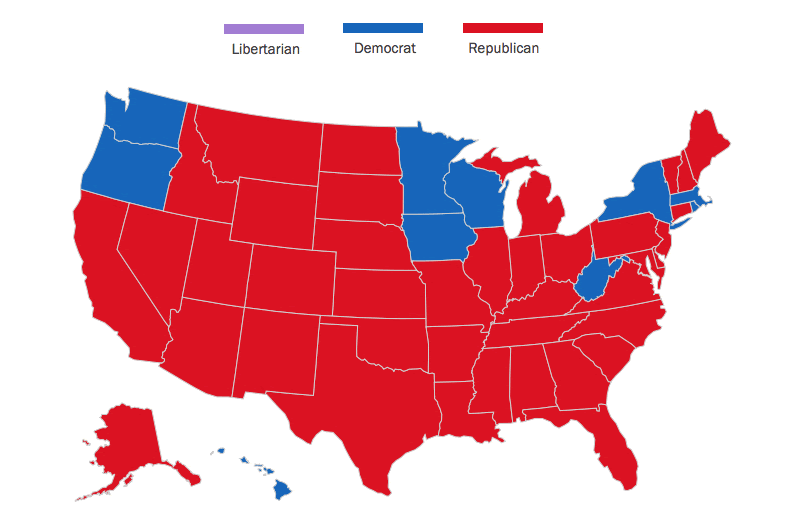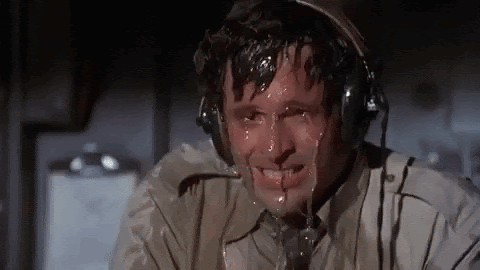
With the presidential election finally on our doorstep, we’re faced with several possible outcomes of a peaceful or tumultuous transfer of power. If it makes you feel any better, each scenario has been seen before with corresponding market data to back it up.
This Week: What to expect of the stock market after the election.
Bonus: A little-known but surprisingly potent indicator of who will win the election.

Since 1930, the Dow Jones Industrial Average has gained an average of 10% in the first year of presidency and 7.9% in the second. According to a study by YCharts, the year prior to the election has the greatest average increase, at 13.3%, with the election year itself being the worst, at 5.4%.
Of course, there are exceptions due to preexisting factors of each term. For example, George Bush’s final year of service, from January 2008 - 2009, saw a market degradation of 32%. Granted, that was the middle of the financial crisis.
These averages are fairly ambiguous - a closer look is clarifying.
Democrat or Republican
Conventional sentiment says that a Republican presidency is better for businesses, and therefore the stock market. The data says otherwise.
While the market reacts more positively to a Republican president-elect, the market actually performs better through the course of a Democratic presidency.

A Republican president-elect offers an average 1.5% growth to the S&P 500 compared to a Democrat’s 0.9%. Through the completion of their term, Republicans average 22.5% growth at a 3.5% annualized rate, whereas the Democrats have historically doubled that rate at 47.6%.

Oops. Didn’t expect that.
Again, this is an historic average. While the trend is especially prevalent since the Clinton administration, the Trump Presidency was a boon for the stock market overall, garnering a 50% increase.
United or Divided Government
There is a common misconception that markets do better when the government is divided, meaning the presidential party is opposite both houses of Congress, or some combination therein.
The thought is that if the government is divided and subsequently impotent, the markets are free to grow and expand without political headwind.
YCharts has examined this scenario from three separate viewpoints:
One party controls the White House and both houses of Congress: 10.7% annual growth
Split Congress: 9.1% annual growth
The White House is opposite both houses of Congress: 7% annual growth
A divided government in fact leads to the least amount of growth, likely due to public sentiment regarding the inefficacy of our legislative bodies.
That being said, these averages are not drastically different. As an investor or aspiring retiree, the market health implications of who wins the election are nothing to lose sleep over. Across the board, regardless of the political party in power, the market largely improved.
The graphic below shows the percentage increase (or decrease) through each president’s term, going back to Harry Truman:

Supreme Court Involvement
In September, President Trump expressed little faith in the ability of mail-in ballots to be accurately counted or even received. When asked if he would commit to a peaceful transfer of power, he didn’t respond.
What does that actually mean?
Hopefully, it just means he disputes the decision as unfairly rendered, which lands the issue in the lap of the Supreme Court. If President Trump loses, but gracefully refuses to leave the White House, I assume greater force will be applied?

A similar situation occurred in 2000 during the presidential race between Al Gore and George Bush. A final decision was delayed nearly five weeks while the Supreme Court issued a recount of the votes.
During that time, the S&P 500 sank 8.4%.
Given other outstanding factors like Coronavirus, a struggling economy, and social strife, a delayed decision for the 2020 presidential race could likely see markets depreciate more than 10%.
Best Case Scenario: The race is clearly won and a recount is unnecessary. Mild volatility sweeps the markets because it’s an emotional time.
Worst Case Scenario: The vote count is delayed and the final ruling goes to court. Markets hemorrhage until a winner is chosen.
That being said, expect the market to pull some dips and dives in the preceding weeks. Historically speaking, the situation will level, emotions will subside, and the market will continue a steady march upward.
Bonus
While elections are a fairly inaccurate indicator of future market movements, the converse is not necessarily true.
It turns out that the stock market is in fact a surprisingly capable prophet of who will call the White House home for the next four years. Here’s how it works:
If the stock market is up for the three months preceding the election, put your money on the incumbent party.

Losses over those three months typically usher in a new party.
In the 24 elections since 1928, 14 of those elections were preceded by three months of stock market gains. In 12 of those 14 instances, the incumbent party won the White House.
In 8 of 9 elections with stock market losses for the three months prior, the incumbent party was sent packing. That’s a whopping 87% accuracy rate.
So, the number to look for this year? 3,295.
So long as the S&P 500 remains above 3,295, Trump has a good chance of maintaining his residency by this indicator.
And would you believe it?

If you’re waiting with bated breath and sweating like a pig (see below for reference), so am I.

Thanks for reading - stay safe out there :)
If you thought this article was halfway decent and worth sharing with someone you know, please do so using the button below!



